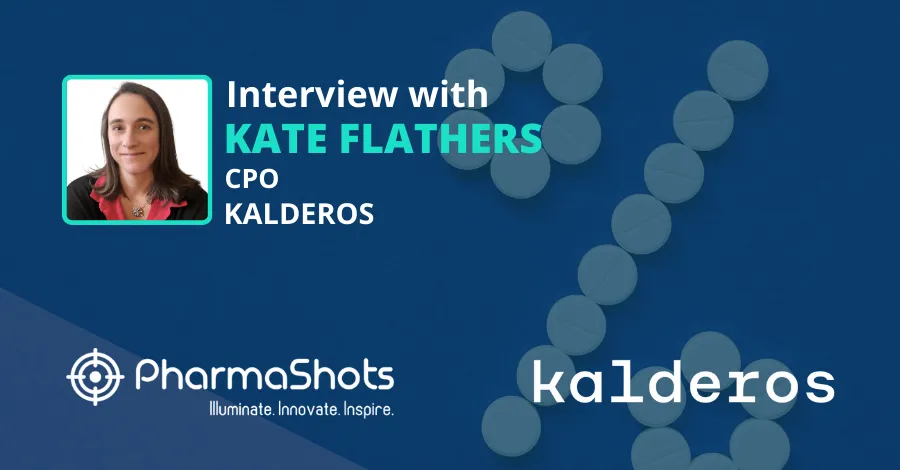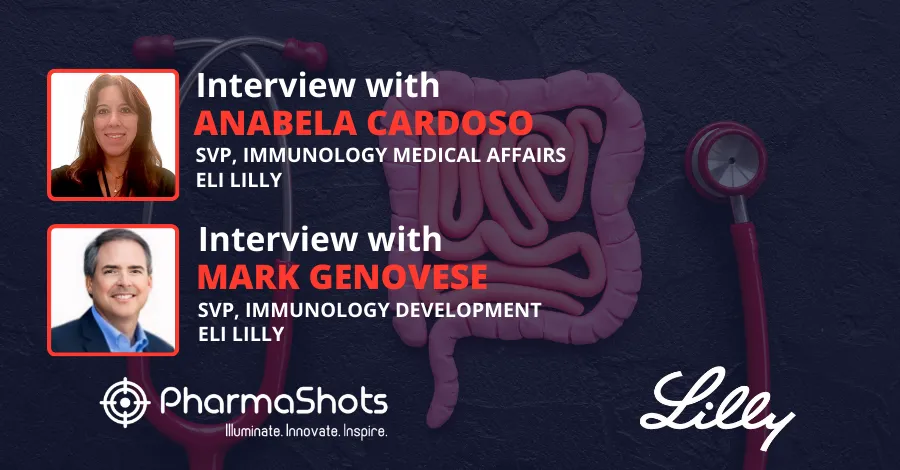
Unlocking Approval: Chris Gasink from Johnson & Johnson in an Enlightening Conversation with PharmaShots
Shots:
- Johnson & Johnson’s (J&J) Tremfya recently received its third approval from the US FDA, supported by the pivotal QUASAR study, which demonstrated significant remission after one year of treatment in adults with moderately to severely active ulcerative colitis
- Tremfya is a dual-binding monoclonal antibody targeting interleukin 23 (IL-23), a cytokine responsible for inflammation
- At PharmaShots, Chris Gasink, VP of US Medical Affairs for Gastroenterology and Autoantibody at J&J Innovative Medicine, shared insights on Tremfya and the pipeline candidate JNJ-2113.
Saurabh: Congratulations on receiving the third FDA approval for TREMFYA this year for ulcerative colitis. Can you elaborate on how it provides relief in case of ulcerative colitis?
Chris: The approval of TREMFYA marks an important milestone for the ulcerative colitis (UC) community many of whom have struggled to achieve remission with existing therapy. TREMFYA meets the significant need for a new treatment option in UC that can offer meaningful improvement in symptoms and the promise of remission, both overall clinical remission as well as delivering visible healing of the colon through endoscopic remission.
TREMFYA inhibits the pro-inflammatory cytokine IL-23, a cytokine that is known to be a driver of immune-mediated diseases including UC. As the first and only dual-binding IL-23 inhibitor, TREMFYA is designed to neutralize inflammation at the cellular source by blocking IL-23 and can also bind to CD64 (a receptor on the primary cells that produce IL-23 in the tissue). The clinical significance is not known.
Saurabh: As a dual-binding monoclonal antibody, what challenges have you faced in the development of Tremfya?
Chris: We carefully prioritize scientific pathways that will yield differentiated clinical and scientific results, and we are proud to be at the forefront of scientific advances in the IL-23 pathway.
- We established the foundation for our IL-23 expertise with STELARA as the first anti IL-12/23, which today is now indicated for UC, Crohn’s disease (CD), plaque psoriasis (PsO) and active psoriatic arthritis (PsA). As a pioneer in the space, we know not all IL-23s are the same.
Saurabh: Could you walk us through QUASAR study and its findings?
Chris: The approval was based on results from the pivotal, ongoing QUASAR study (now in long term extension), in which TREMFYA demonstrated highly statistically significant rates of endoscopic remission at one year of treatment among adults with moderately to severely active UC, which represents a normalization of the Mayo score of 0 and thus visible healing of the colon at one year.
QUASAR is a randomized, double-blind, placebo-controlled, parallel-group, multicenter Phase 2b/3 program designed to evaluate the efficacy and safety of TREMFYA in adult patients with moderately to severely active UC who had an inadequate response or intolerance to conventional therapy (e.g., thiopurines or corticosteroids), prior biologics and/or JAK inhibitors (i.e., tumor necrosis factor-alpha antagonists, vedolizumab, or tofacitinib). QUASAR included a Phase 2b dose-ranging induction study, a confirmatory Phase 3 induction study, and a Phase 3 maintenance study.
Findings from QUASAR showed statistically significant and clinically meaningful improvements in symptoms, patient-reported outcomes, and measures of disease activity, including rigorous endpoints such as endoscopic remission at one year, in patients treated with TREMFYA versus placebo. Results from the combined treatment groups showed:
- 23% of patients receiving IV induction of TREMFYA 200 mg (q4w) compared to placebo (8%) (p<0.001) achieved the primary endpoint of clinical remission at week 12
- 45% of patients receiving TREMFYA 100 mg SC every eight weeks (q8w) and 50% of patients receiving TREMFYA 200 mg subcutaneous (SC) maintenance every four weeks (q4w) achieved the primary endpoint of clinical remission at week 44 compared to 19% placebo-treated patients (p<0.001)
- 35% (100 mg) and 34% (200 mg) of patients achieved endoscopic remission at one year with TREMFYA SC maintenance therapy compared to 15% of placebo-treated patients (p<0.001)
Results reinforced the well-established safety profile of TREMFYA in the treatment of patients with UC.
Saurabh: Tremfya has shown adverse effects such as respiratory tract infection. What other side effects are indicated with the use of Tremfya?
Chris: The QUASAR results reinforced the well-established safety profile of TREMFYA in the treatment of patients with UC. In UC, the common adverse events occurring in at least 3% of patients and more often on TREMFYA than placebo through the end of the maintenance period were upper respiratory tract infections, injection site reactions, and arthralgia.
Saurabh: What advantage does Tremfya offer in the treatment of ulcerative colitis over its competitors?
Chris: There are no trials comparing TREMFYA to other treatments in UC. That said, we are excited about the unique attributes of TREMFYA, including:
- First and only: First and only dual-binding IL-23 inhibitor for the treatment of adults with moderately to severely active UC that is designed to neutralize inflammation at the cellular source by blocking IL-23 and binding to CD64 (a receptor on cells that produce IL-23). The clinical significance of these findings is not known.
- High endoscopic remission: In the QUASAR clinical program, TREMFYA demonstrated highly statistically significant reported rates of endoscopic remission at one year of treatment, continuing to raise the bar for efficacy in the IBD treatment landscape.
- Subcutaneous (SC) administration with IV induction dosing: For the treatment of UC, patient-centric dosing is offered with TREMFYA, meaning physicians will be able to choose the most appropriate dose for patients
- The first three induction 200 mg doses will be given through IV infusion over a period of at least one hour in a healthcare facility every four weeks.
- After finishing the three starter doses, patients will receive maintenance dosing as a 100 mg SC injection at week 16 and every eight weeks thereafter, or a dose of 200 mg may be administered by SC injection starting at week 12 and every four weeks thereafter instead. The SC maintenance dose can be self-administered by the patient or administered by a caregiver using TREMFYA after proper training.
Additionally, in November, we submitted a supplemental Biologics License Application (sBLA) to the FDA seeking approval of an SC induction regimen of TREMFYA for UC. TREMFYA is the first IL-23 inhibitor to potentially offer a fully SC induction and maintenance regimen, which if approved, may provide more choice and simplicity for patients and physicians.
- The filing is supported by data from the Phase 3 ASTRO study of TREMFYA SC induction therapy, which achieved statistically significant and clinically meaningful results for the primary endpoint of clinical remission at Week 12 and met all secondary endpoints, including endoscopic improvement, in adults with moderately to severely active UC.
Saurabh: Tremfya is in the line for its fourth approval for Crohn's disease. Assuming a positive outcome, can we expect more studies and approval for diseases associated with IL-23 in the future?
Chris: We are excited about the possibility of extending our legacy of bringing new treatments to patients with CD, building upon the legacy of REMICADE and STELARA with what would be our third approval in that disease state. We are also eager to potentially deliver versatility and options in treatment administration with an SC induction regimen of TREMFYA for UC.
On the R&D side, we remain committed to continuing to advance new therapies into the future which could provide patients and physicians with additional new treatment options and flexibility in routes of administration in the IL-23 pathway.
For example, we are excited to see initial data on JNJ-2113 in IBD, the first and only investigational targeted oral peptide designed to block the IL-23 receptor, which was jointly discovered and is being developed pursuant to the license and collaboration agreement between Protagonist Therapeutics and Johnson & Johnson. Johnson & Johnson retains exclusive worldwide rights to develop JNJ-2113 in Phase 2 clinical trials and beyond, and to commercialize compounds derived from the research conducted pursuant to the agreement against a broad range of indications.
Findings from the FRONTIER 1 and 2 clinical trials in moderate-to-severe PsO suggest the potential of JNJ-2113 across the spectrum of additional IL-23-mediated diseases. Accordingly, J&J has initiated the Phase 2b ANTHEM-UC study to evaluate the safety and effectiveness of JNJ-2113 compared to placebo in participants with moderately to severely active UC.
Saurabh: This approval contributes to 30 years of Johnson’s immunology innovation legacy. Can we hope for any addition to this legacy in near future?
The approval of TREMFYA expands Johnson & Johnson’s nearly three-decade leadership in immunology and underscores our commitment to relentlessly advancing care for patients living with chronic immune-mediated diseases. We have pioneered biologic medicines that aim to address underlying causes of disease – not just the symptoms. These therapies have been used to treat millions of patients worldwide across a broad spectrum of inflammatory diseases, including IBD, many of whom are still seeking symptom relief and remission.
Looking ahead, we are continuing to work with the FDA on our submissions for TREMFYA in the treatment of adults with moderately to severely active CD, as well as for an SC induction regimen of TREMFYA in the treatment of adults with moderately to severely active UC. Additionally, we are advancing our pipeline and look forward to sharing additional data evaluating JNJ-2113 in the future.
At Johnson & Johnson, we’re leading where medicine is going, and will continue to lead by delivering innovative and accessible therapies for people with immune-mediated disease. There is significant unmet need for these patients and our growth and investment is driven to close that gap.
- If you are interested in learning more about our pipeline, visit the Pharmaceutical Pipeline section of our website here: https://www.investor.jnj.com/pipeline/pharmaceutical-pipeline/default.aspx.
Image Source: Canva
About the Author:
.png)
Christopher Gasink
Christopher Gasink, MD, Vice President, US Medical Affairs - Gastroenterology and Autoantibody, Johnson & Johnson Innovative Medicine
Christopher Gasink, MD is a senior medical affairs healthcare leader with nearly 20 years of pharmaceutical experience across the inflammatory bowel disease therapeutic area and functional leadership role.
Currently, Chris is Vice President, US Medical Affairs – Gastroenterology and Autoantibody at Johnson & Johnson Innovative Medicine. In this role, he leads in the design and execution of Phase 3 and 3b/4 clinical trials and regulatory post-marketing commitment studies in Crohn's disease, ulcerative colitis and autoantibody diseases, as well as subsequent analysis, interpretation and publication of study data. Additionally, he leads U.S. medical affairs strategy and execution for Johnson & Johnson’s innovative gastroenterology portfolio which includes TREMFYA®, STELARA®, SIMPONI® and REMICADE®, and across a total of 8 adult and pediatric previously approved indications.
He has an established track record which includes leading the successful launches of STELARA® in Crohn’s disease (including serving as the clinical R&D lead for the Crohn’s disease development program and global regulatory submissions) and ulcerative colitis, both of which surpassed expectations and became a large basis for the product’s trajectory to become Johnson & Johnson’s largest brand. His latest success was driving the launch of TREMFYA® into the gastroenterology market with its September 2024 FDA approval for adults with moderately to severely active ulcerative colitis.
Since joining Johnson & Johnson in 2007, Chris has taken on roles with increasing responsibilities, first working for 9 years in Immunology Clinical Research & Development and then moving over to Medical Affairs to lead the US GI team. He has led numerous Phase 2 through 4 clinical studies and has co-authored 15 peer-reviewed journal articles.
Chris keeps a relentless focus on the evolving needs of healthcare professionals and patients by ensuring enough clinical information is available so that joint treatment decision-making can take place in increasingly competitive and complex markets.
Chris graduated from the College of William and Mary with a B.S. in Biology and Public Policy and earned his medical degree from the University of Virginia. An accomplished gastroenterologist, Chris has also served as a clinical instructor at the Hospital of the University of Pennsylvania where he completed his residency in internal medicine, a fellowship in gastroenterology, and did post-doctoral biomedical research in the field of T-cell immunology. He also served for three years on the Faculty at the University of Pennsylvania as an Instructor in the Department of Medicine.
Related Post: Cardiology Care and Beyond: Mina Makar from AstraZeneca in a Riveting Dialogue Exchange with PharmaShots
Tags

Saurabh is a Senior Content Writer at PharmaShots. He is a voracious reader and follows the recent trends and innovations of life science companies diligently. His work at PharmaShots involves writing articles, editing content, and proofreading drafts. He has a knack for writing content that covers the Biotech, MedTech, Pharmaceutical, and Healthcare sectors.














